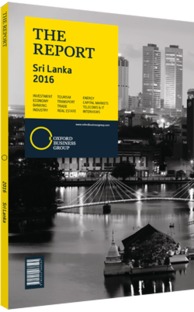Rajan Brito, Deputy Chairman and Managing Director, Aitken Spence: Interview

Interview: Rajan Brito
What more can be done to better market Sri Lanka as a global destination?
RAJAN BRITO: Much needs to be done to improve how we brand Sri Lanka. Traditionally, the government thinking was that when the war ended, people would just come. Because it relied on this alone, nothing substantial has been done. By not encouraging the major tour operators to come in, and by not encouraging charters, we have failed to draw the commitments that would then bring the numbers. Thailand and Malaysia get 26m tourists a year, yet here in Sri Lanka we cannot even secure 10% of that. These countries have consistent tag lines; ours keep changing. We have sufficient funds bolstered by a tourism levy, but these have been not properly utilised. All of this has hindered us and not given tourism a strong appearance, when what we need is sustained promotion.
To what extent are your traditional source markets and client profiles shifting?
BRITO: Another major problem here is whom we are targeting. We have primarily gone into the low-end segment, and while there is a niche for boutique hotels coming up on the back of the internet, it is the informal sector which has really grown here through sites like Airbnb. This may not bring all due revenue to the government, and the country as a whole is not benefitting. The Maldives is a perfect example of a country that has gone upmarket and done very well.
Traditionally, tourism was driven by Europe, because the profile of our country is ideal for the European market. Europeans come around ten days and explore the island, visit the beaches, enjoy our tea and explore the cultural interior. In doing this they tend to spend more. Now, we are seeing a greater influx of Indian and Chinese tourists, and we expect that these arrivals will continue to grow on the back of greater air connectivity. Their stays are for much shorter periods of time. Going forward, it is the short-haul clients that will really drive the numbers, which is normal, even for very popular countries like Thailand.
How does critical support infrastructure affect development in certain segments of the country?
BRITO: Lack of infrastructure has affected us badly. Tourists generally prefer locations where they can arrive at their hotel within two hours of landing. Going to the east coast of Sri Lanka requires another six hours minimum. This is problematic because tourism in Sri Lanka can be promoted any day of the year, seasonally, because of the wide variation in our geographies. We see a major shift coming about when and if an airport comes on-line in Trincomolee, as this opens up the entire east coast for visitors. This is the most unspoiled and untapped segment of the island.
In what ways will the introduction of international brands alter the hospitality landscape?
BRITO: It is great to have big names like Shangri La, Grand Hyatt, Marriott and Mövenpick because they bring the numbers and promote the destination. While there are a few big Colombo hotels with more than 300 rooms each that operate at international standards, most resorts do not have more than 100 rooms. This economy of scale is why we cannot compete with Thailand on price, where nearly every hotel has 500 rooms. Again, we do not have this because we have not marketed ourselves well to the big international players. You need these big tour operators to do the marketing and to drive the numbers. While there is the appearance of room shortages at present across the island, there is actually limited yield. Rooms are normally filled up by discounting, with an emphasis on weekend escapes. For the rest of the week these properties remain fairly empty. We can also foresee a scenario where we will need to start importing labour from abroad to help expand the sector because of a lack of adequately trained staff.
You have reached the limit of premium articles you can view for free.
Choose from the options below to purchase print or digital editions of our Reports. You can also purchase a website subscription giving you unlimited access to all of our Reports online for 12 months.
If you have already purchased this Report or have a website subscription, please login to continue.

